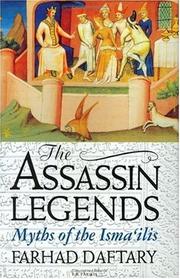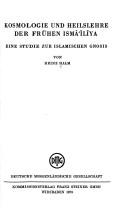| Listing 1 - 10 of 36 | << page >> |
Sort by
|
Book
ISBN: 0404170188 Year: 1980 Publisher: New York (N.Y.) : AMS press,
Abstract | Keywords | Export | Availability | Bookmark
 Loading...
Loading...Choose an application
- Reference Manager
- EndNote
- RefWorks (Direct export to RefWorks)
Book
Year: 1818 Publisher: Stuttgart : Cotta,
Abstract | Keywords | Export | Availability | Bookmark
 Loading...
Loading...Choose an application
- Reference Manager
- EndNote
- RefWorks (Direct export to RefWorks)
Book
Year: 1969 Publisher: New York : Funk and Wagnalls,
Abstract | Keywords | Export | Availability | Bookmark
 Loading...
Loading...Choose an application
- Reference Manager
- EndNote
- RefWorks (Direct export to RefWorks)
Book
Year: 1956 Publisher: Leiden: Brill,
Abstract | Keywords | Export | Availability | Bookmark
 Loading...
Loading...Choose an application
- Reference Manager
- EndNote
- RefWorks (Direct export to RefWorks)
Book
ISBN: 9780815633709 081563370X Year: 2014 Publisher: Syracuse, New York: Syracuse university press,
Abstract | Keywords | Export | Availability | Bookmark
 Loading...
Loading...Choose an application
- Reference Manager
- EndNote
- RefWorks (Direct export to RefWorks)
Ever since the publication of Orientalism, medievalists have attempted to apply Said’s theses on the Western European representation of the Muslim Other to the Middle Ages. Pagès examines the sect of the Nizari Isma‘ilis (known for its use of political assassination) and its complicated relationship with Western Europe, providing a fascinating case study of such an endeavor. The representation of the Nizaris, who came to be known in Europe as the Assassins, closely parallels that of Islam in the Middle Ages. However, how the sect was perceived in Latin Christendom is nuanced and complex, leading to divergent readings of the Assassins. These portrayals ranged from allies in the earliest texts to exotic "marvels of the world" in works of the thirteenth century and thereafter. By delineating how the sect’s representation developed in medieval historical and literary works, From Martyr to Murderer shows that the Assassins did not originally inspire alienation about them in medieval Europeans reading and writing. Pagès’s adroit exploration of the Assassins legend leads us to question our preconceived notions about the larger issue of the image of Islam in the Middle Ages.
Book
Year: 1955 Publisher: 's-Gravenhage, Mouton,
Abstract | Keywords | Export | Availability | Bookmark
 Loading...
Loading...Choose an application
- Reference Manager
- EndNote
- RefWorks (Direct export to RefWorks)

ISBN: 185043705X Year: 1994 Publisher: London New York Tauris
Abstract | Keywords | Export | Availability | Bookmark
 Loading...
Loading...Choose an application
- Reference Manager
- EndNote
- RefWorks (Direct export to RefWorks)
Assassins (Ismailites) --- Assassins (Ismaéliens) --- Historiography --- History --- Historiographie --- Histoire --- -Assassins (Ismailites) --- -Batinites --- Islamic sects --- Ismailites --- Regicides --- -Historiography --- Assassins (Ismaéliens) --- Batinites --- Assassins (Ismailites) - Historiography. --- Assassins (Ismailites) - History. --- History.
Book
ISBN: 9004404236 9648700508 Year: 2019 Publisher: Leiden; Boston : BRILL,
Abstract | Keywords | Export | Availability | Bookmark
 Loading...
Loading...Choose an application
- Reference Manager
- EndNote
- RefWorks (Direct export to RefWorks)
Rashīd al-Dīn Hamadānī's (d. 718/1319) Jāmiʿ al-tawārīkh has been described by many as the first world history ever. Composed in Persian for the Mongol Il-khans Ghāzān (r. 1295-1304) and Öljeitü (Uljāytu, r. 1304-16), its aim was to set out the history and condition of the Mongol people, conquerors of the world (part one), followed by a description of the other peoples and nations of the world and their histories (part two). Given its unprecedented scope, Rashīd, vizier to both rulers, mobilized a whole team of specialists, informants, and collaborators to assist him in his task. Making use of written and oral sources, the part on the Mongols is a key source on the emergence and organisation of the Mongol empire, while the second part constitutes the first attempt ever at writing a history of the world. The section published here describes the history of the Ismailis.
Assassins (Ismailites) --- Fatimites --- History --- Egypt --- Iran

ISBN: 3515026754 9783515026758 Year: 1978 Volume: 44/1 Publisher: Wiesbaden: Steiner,
Abstract | Keywords | Export | Availability | Bookmark
 Loading...
Loading...Choose an application
- Reference Manager
- EndNote
- RefWorks (Direct export to RefWorks)
Ismailites --- Ismaili --- Ismailians --- Assassins (Ismailites) --- Shīʻah --- Ismailis
Book
ISBN: 2711618625 9782711618620 2711618625 Year: 2007 Volume: 40 Publisher: Paris: Vrin,
Abstract | Keywords | Export | Availability | Bookmark
 Loading...
Loading...Choose an application
- Reference Manager
- EndNote
- RefWorks (Direct export to RefWorks)
Assassins (Ismailites) --- Assassins (Ismaéliens) --- Historiography. --- History. --- Historiographie --- Histoire
| Listing 1 - 10 of 36 | << page >> |
Sort by
|

 Search
Search Feedback
Feedback About UniCat
About UniCat  Help
Help News
News